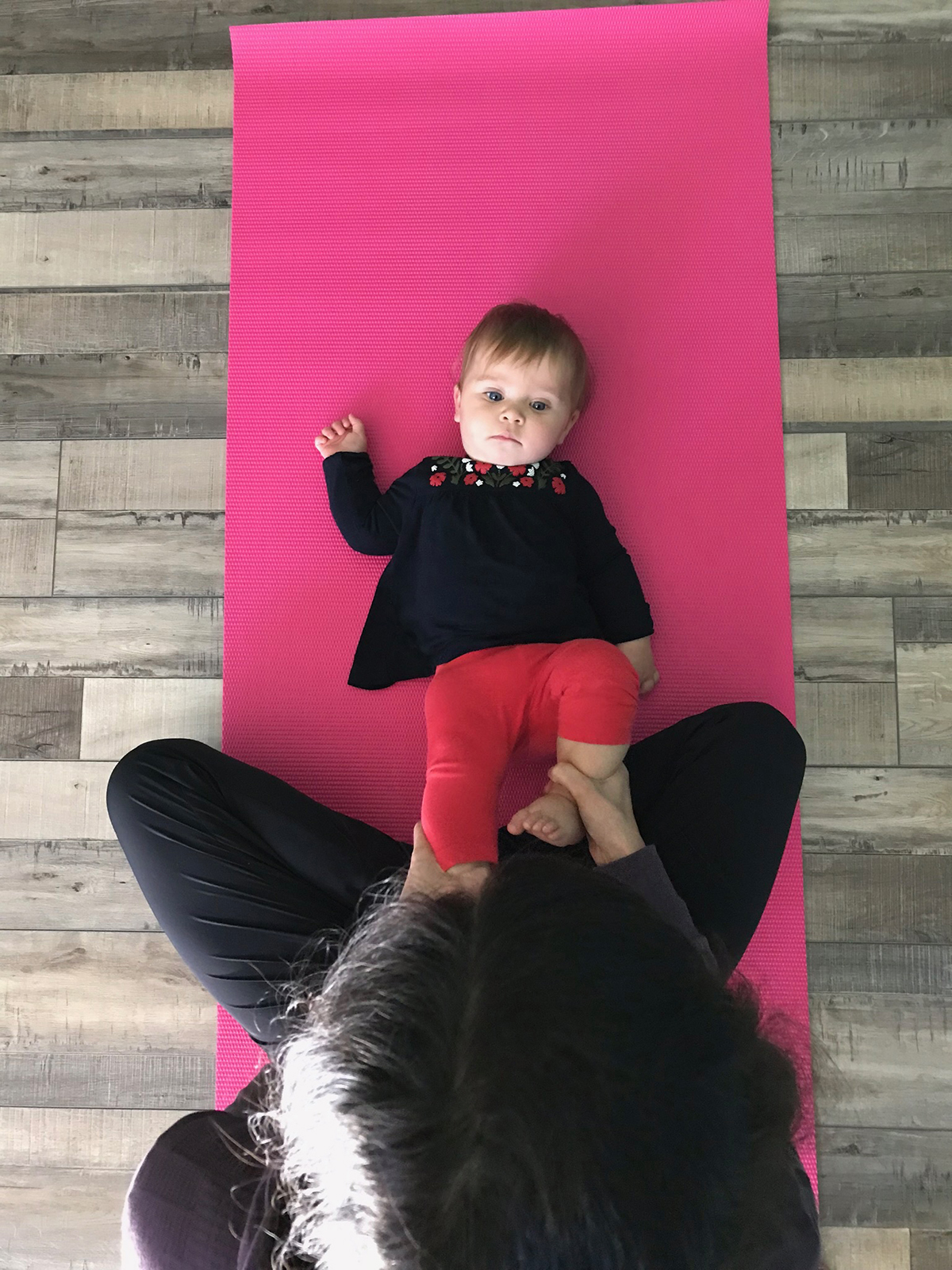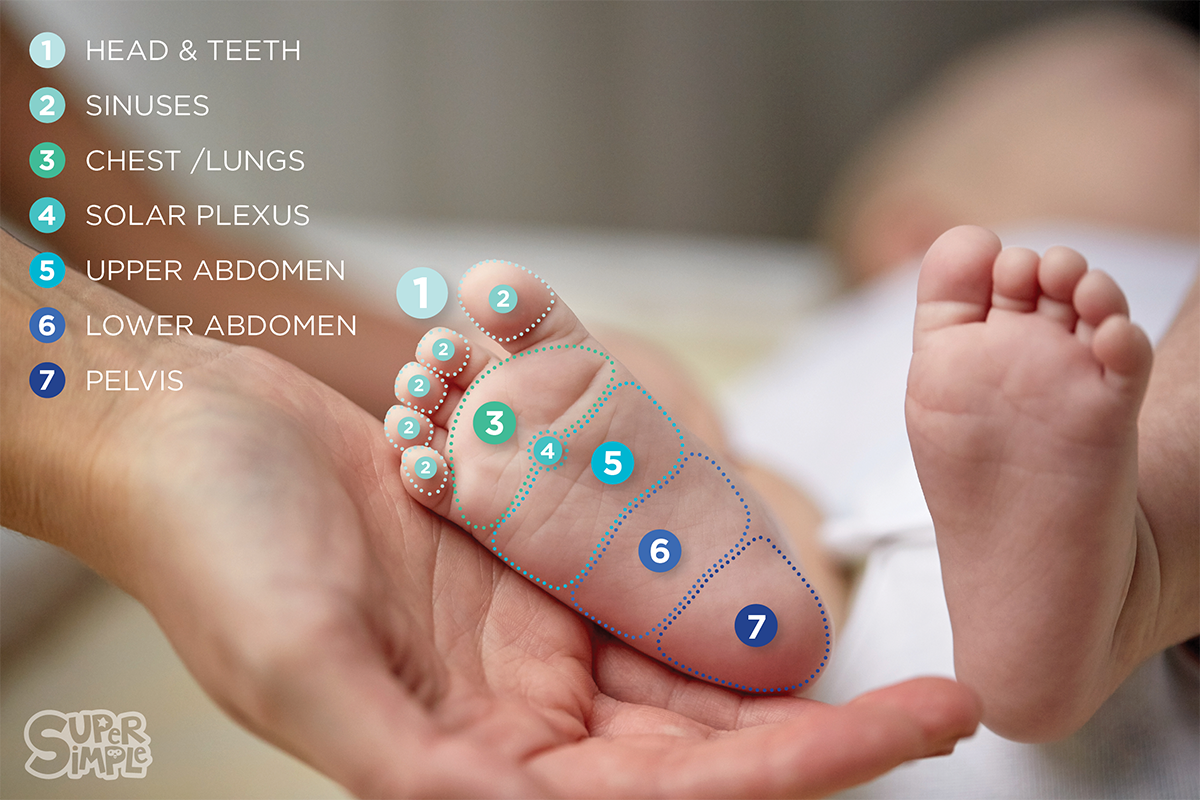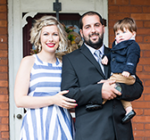
Infant massage helps to increase the bonding between the baby and their parents or caregiver.
It teaches both the caregiver and the baby how to relieve stress while helping to increase relaxation through the use of touch.
- lt helps to stimulate the development of various systems of the body
(digestive, circulatory, musculoskeletal system) - lt helps to relieve colic and gas
- Massage helps to regulate sleep patterns and relax muscles
- Massage helps the caregiver to understand the messages or cues given by the baby, which in turn helps to increase the communication between caregiver and infant using body language. One of the most common and important signs is when your baby arches their back, that is their way of telling you no, I don’t like this and is always important to listen. You should not continue to massage an infant that shows signs they do not want it.

While there are some similarities between massage for adults and infants, infant massage is NOT an adult massage done on an infant. Where adult massage uses pressure to relieve tension and knots in the muscles, infant massage uses stretching, pumping and wringing motions to get the circulation moving and even out the tissues from head to toe. Especially after they have been bundled up tight for a long period of time. There could be some contraindications* for massage therapy to anyone, but especially infants.
First of all, since the circulation is moving around the entire body you want to avoid doing any infant massage when they are sick/fevered as it can increase the symptoms. If they have hypersensitive skin you want to avoid irritating it. Using natural oils such as coconut or jojoba oil will help to reduce the irritation. You also want to avoid any skin conditions that may become more dry and irritated such as eczema, psoriasis, open skin sores/cuts/scrapes or contagious skin conditions such as ringworm.
Using this simple guide to infant reflexology it can help for the times when your baby is fussy and will not let you touch their entire body but their feet can be used to help affect all of the body systems.

Before fully engaging in infant massage with your baby, you must “ask for permission.” This may sound a bit silly as they cannot talk or really understand you, however just laying them down and undressing them will give you a sign whether they want to be touched at this time. It is not always necessary to undress the baby however it is a good way to get skin to skin contact for the massage.
Ways to ask your baby are to start at the shoulders and gently squeeze, working your way down the arms, then light stroking onto the abdomen and back to gentle squeezing on the legs with light pushing and pulling of the legs. If your baby seems content and relaxed by this you can continue to add oil and get into an infant massage routine with them. If your baby is fussy, arching their back or making a face you can tell is clearly not welcoming of this right now, you can try some tummy time and doing strokes on their back. However, if they are still not interested don’t force it, as that is their way of communicating and you want them to trust you.
Once your baby gives you the go-ahead here are some tips, tricks and a routine you can follow at home. These can be used on toddlers as well if you can catch them and lay them down for long enough to know how amazing a massage can be!
- Ask your baby (in a mom to baby way) if they would like to be on their back or stomach first. They usually have a preference and its best to go with that rather than to choose for them.
- Start by doing light stroking all over their body to give them the sense of a calming touch and that its safe and this will feel good.
- Gently take their clothes off leaving their diaper on if its right after a bath you can start the strokings at this point. (If its cold, have them on a warm thicker blanket for comfort and make sure to warm up your own hands.)
- Once they are undressed do gentle squeezing along arms and legs to give them a sense of touch as well as getting the blood flowing from the limbs to the body and because it simply feels good.
Laying on back, apply infant safe lotion or oil to the entire body, make sure it’s not a quick absorbing or it will get sticky and irritating, coconut, jojoba or any sort of natural oil works best. Start by warming up the oil in your hand and gently from the neck/shoulders down, across the chest, and down the arms. Go back to the middle across the belly going up their right side down them left (which helps which digestion and gas, never go the opposite way as you could back them up or cause a large gas bubble to form.)
Lastly, apply the oil to the legs by doing like wringing on the thighs, then calves then take a few extra seconds on the feet.
Laying on stomach, apply in the same order as when they are laying on their back, warm up oil in your hands, start at the neck/shoulders and lightly move own the arms with some light wringing as they may be using them to hold themselves up. Apply the oil to the back from top to bottom using light strokes just to make sure you have it on, then once you’ve got to their legs some light wringing on the thighs, then calves with a few extra seconds on their feet.
Once the oil is applied it’s a good rule of thumb to always make sure to let your baby lead the way. If they are curious and moving around a lot, try following their lead and massaging what you can. Always direct your pressure towards their center. For example, if you’re working on their arms or legs make sure you’re pulling the circulation back toward the body so you’re not making their hands and feet uncomfortable by adding fluid.
Roll your baby over once you think you’ve relaxed what you could and work on the other side. Note specific abdominal and feet techniques.
Abdominal Massage Note: Always remember to go up their right side across and then down their left so you’re going in the direction of their intestine and helping gas and other things through their digestive system. Going in the other direction would back them up and cause a lot of pain. See above.
Infant Foot Massage: It’s best to start at the heel on an infant as it’s not as ticklish as the toes and arches of the foot. Refer to the chart for the locations that refer to each part of the body so that you can focus in on the part that you think is most concerning for your baby. Using enough pressure with your thumbs on the foot to move the muscle not just the skin will help prevent from the ticklish feeling and help get more of a massage feeling, but remember they are just babies so they can be sensitive and to only use as much as you think is appropriate to be moving both the skin and muscle.
*In medicine, a contraindication is a condition or factor that serves as a reason to withhold a certain medical treatment due to the harm that it would cause the patient.
Don’t forget to follow us on Twitter, Instagram, Pinterest, and Facebook!
 Contributor
Contributor
Rebecca Kitchen is a Registered Massage Therapist and Acupuncturist. She is trained in myofascial release, doula support, contemporary cupping therapy, and postpartum care. She has worked extensively in physiotherapy and naturopathic clinics, a hospital and with a chiropractor, and is aware of how a holistic approach between professions can benefit each patient. Her practice is in Woodstock, ON Canada, where she lives with her husband Greg, and their toddler Harvey. You can follow her on Facebook here.
Original content © 2018 Super Simple. Not to be reprinted without express written permission. Terms of Service.

